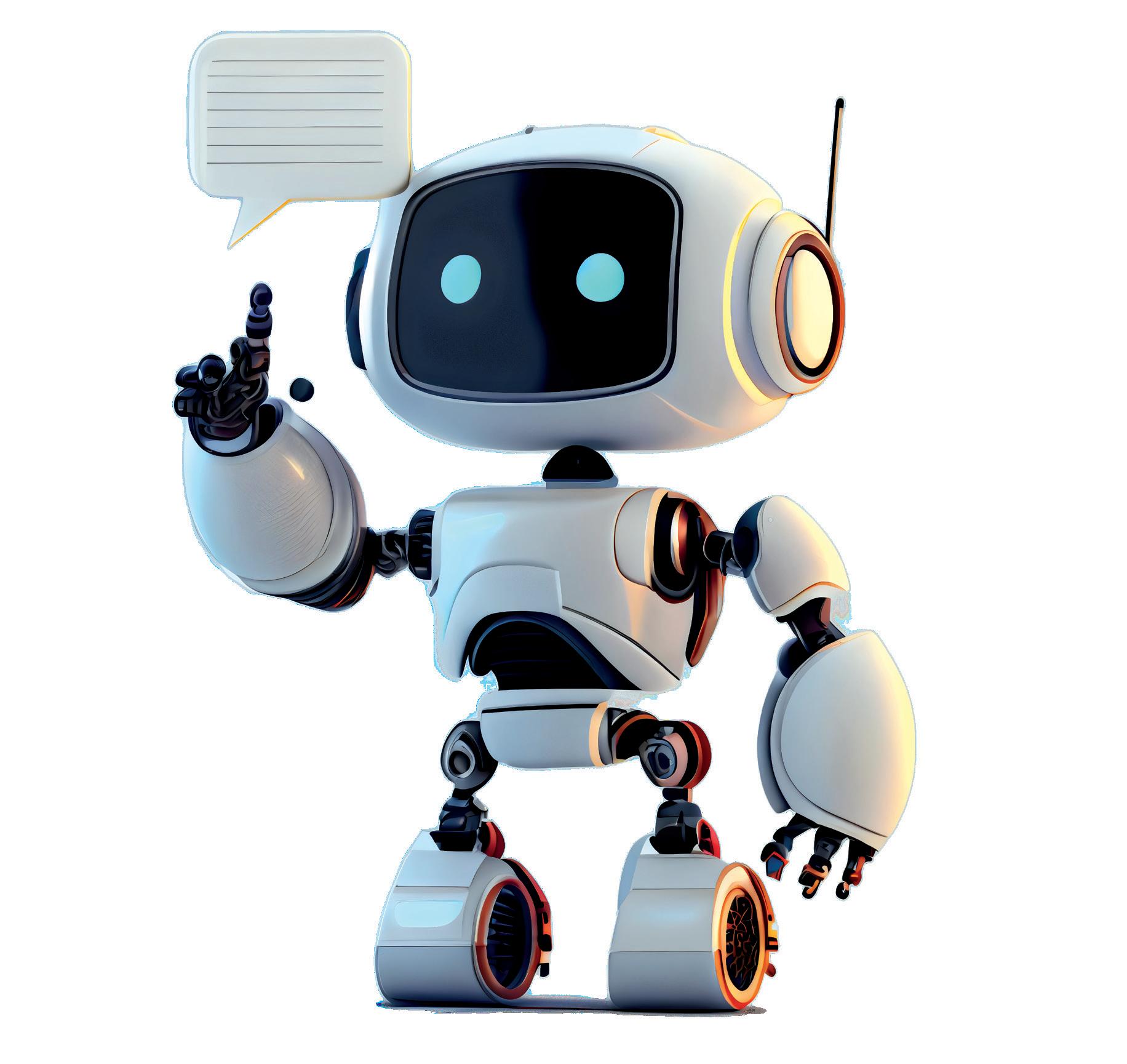
3 minute read
MY LOVE AFFAIR WITH ChatGPT
Wendy Lewis shares her infatuation with OpenAI’s first-to-market chatbot
CHATGPT AND I MET OUT OF MY SHEER curiosity in April 2023, and we have been inseparable ever since. ChatGPT stands for ‘Chat Generative Pre-trained Transformer’. It is an AI chatbot that was built on a family of large language models (LLMs), collectively known as GPT-3.
Fast forward to July 2023, and I keep my ChatGPT open on my desktop on a daily basis. I have moved on from ChatGPT to ChatGPT+ (the paid version), and from ChatGPT-3 to ChatGPT-4.
ChatGPT-4 is only available to paid subscribers of ChatGPT+, which as of this writing, costs $20 USD per month. It is OpenAI’s most advanced system that they claim ‘produces safer and more useful responses.’
In its own words, ChatGPT is ‘a friendly and intelligent robot’. ChatGPT can do way more than you think and probably more than any of us will ever need to use it for.

In case you are interested, ChatGPT is also available as an app and on IOS in some countries.
Where it all began
Created in November 2022 by OpenAI, ChatGPT was the first to market. However, it didn’t take long before we had AI-wars as more players entered this exciting and potentially game-changing category.
According to techradar.com, ChatGPT is now the fastest-growing consumer app in history, hitting 100 million users in only two months. It is rapidly morphing into new and improved models, which makes it even more confusing for lay people (aka non-engineers) to get our heads around. In fact, Microsoft uses a form of it in its Bing search engine and Microsoft Edge browser and is also an investor in OpenAI.
Not to be outdone, Google launched its own chatbot model called Google Bard, which is referred to as an ‘experimental conversational AI service.’ From my perspective, Bard is useful since it lives on Google, which is open on my MacBook all day long. It also claims to draw on information from the internet to provide what Google calls ‘fresh, high-quality responses.’
ChatGPT is not connected to the internet in the same way. In my experience, the most significant glitch in ChatGPT is that, to date, it does not have the ability to help if I need information on anything that occurred after September 2021. The disclaimer reads like this: ‘As an AI language model, I don’t have access to real-time information or future developments beyond my knowledge cutoff in September 2021.’
This means that this AI cannot share anything or respond to any query about something that occurred in the past 22 months, at least as of the time of this printing.
More AI players
The next giant to launch its own AI version was Microsoft’s Bing. The Bing chatbot is integrated with the Bing search engine to retrieve relevant information. It uses machine learning algorithms to match the input with predefined intents or categories. A benefit is that it can be integrated into other messaging platforms or applications and interfaces with Microsoft Teams, Facebook Messenger, and Skype.
In April, Snapchat announced their own chatbot called ‘My AI’, which operates on the latest version of OpenAI’s technology.
Another newcomer aiming to compete with ChatGPT was created by Anthropic, a self-proclaimed ‘AI safety and research company.’ Going by the name Claude, like ChatGPT, it doesn’t access the internet, and its training only goes up to the spring of 2021. Claude has two versions; ‘Claude’, which is referred to as ‘a state-of-the-art high-performance model’ and ‘Claude Instant’, which is defined as ‘a lighter, less expensive, and much faster option.’
According to TechCrunch, Google pledged $300M US in Anthropic for a 10% stake in the company.
What ChatGPT can do for you
ChatGPT can do way more than you think and probably more than any of us will ever need to use it for.
OpenAI’s GPT-4 model can understand and generate human-like answers to text prompts because they’ve been trained on huge amounts of data. For example, ChatGPT’s original GPT-3.5 model was trained on 570 GB of text data from the internet, which OpenAI says included books, articles, websites, and even social media.
Because it has been trained on hundreds of billions of words, ChatGPT can create responses that make it seem almost human. ‘Almost’ is the operative word here, as










